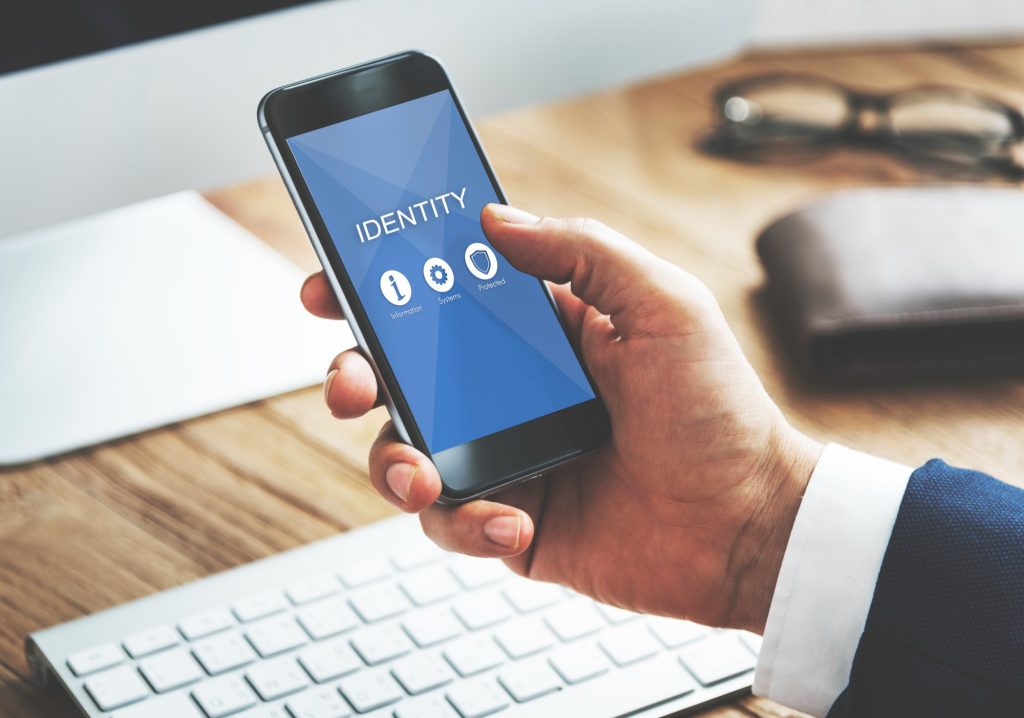Top Security Apps to Enhance Online Shopping Safety on Your iPhone
September 18, 2023

Are you an avid online shopper? If so, you probably know that keeping your personal information safe and secure is crucial in today's digital world. Fortunately, there are plenty of security apps available for your iPhone that can help enhance your online shopping safety. In this article, we will explore the top security apps that you can download to protect your personal information while shopping online. Let's dive in!

Ensuring Safe and Secure Online Shopping
When it comes to online shopping, it's essential to take precautions and protect your personal information. Here are some tips to keep in mind:
- Use a secure network: Avoid using public Wi-Fi networks when making online purchases, as they are often not secure. Instead, opt for a trusted and encrypted network.
- Keep an eye out for secure websites: Look for the "https://" prefix in the website's URL, indicating that the site is encrypted and secure.
- Beware of phishing attempts: Be cautious of emails or messages that request your personal information, such as passwords or credit card details. Legitimate companies will never ask for this information via email.
- Update your devices and apps: Keeping your iPhone's operating system and apps up to date ensures that you have the latest security patches.
Now that we have covered the basic tips for safe online shopping, let's delve deeper into each one to understand why they are important.
Using a secure network is crucial because public Wi-Fi networks are often unencrypted, making it easier for hackers to intercept your personal information. By using a trusted and encrypted network, you can ensure that your data is transmitted securely.
When you see the "https://" prefix in a website's URL, it means that the site has an SSL (Secure Sockets Layer) certificate. This certificate encrypts the data exchanged between your browser and the website, protecting it from unauthorized access. Always look for this prefix before entering any sensitive information on a website.
Phishing attempts have become increasingly sophisticated, making it important to stay vigilant. Hackers may send emails or messages that appear to be from legitimate companies, tricking you into providing your personal information. Remember, reputable companies will never ask for sensitive information via email. If in doubt, contact the company directly through their official website or customer support channels.
Updating your devices and apps is crucial for maintaining a secure online shopping experience. Manufacturers regularly release software updates that address security vulnerabilities. By keeping your iPhone's operating system and apps up to date, you ensure that you have the latest security patches installed, reducing the risk of exploitation by hackers.
By following these tips, you can shop online with confidence, knowing that you have taken the necessary precautions to protect your personal information. Remember, online security is an ongoing process, so it's important to stay informed and adapt to new threats as they emerge.
Understanding Payment Security Measures
Now that you know how to protect your personal information, let's take a closer look at payment security measures:
Ensuring the security of your payment information is crucial when shopping online. With the increasing prevalence of cybercrime, it's important to take proactive steps to safeguard your financial data. Here are some additional measures you can take to enhance payment security:
- Choose secure payment methods: When shopping online, opt for secure payment methods such as Apple Pay, PayPal, or credit cards that offer additional security features. These payment options often utilize advanced encryption techniques to protect your sensitive information from unauthorized access.
- Securely store your payment information: If you choose to save your payment information for convenience, make sure to do so in a secure app or service that encrypts your data. Look for payment platforms that employ robust security measures, such as tokenization, which replaces your actual payment details with a unique identifier, further reducing the risk of data breaches.
- Be cautious with auto-fill: While auto-fill can be convenient, be mindful of using it for sensitive information. It's best to manually enter your payment details each time, as auto-fill features may inadvertently expose your data to potential threats. By taking the extra time to input your payment information manually, you can minimize the risk of inadvertently sharing your financial details with malicious actors.
- Regularly monitor your financial statements: Stay vigilant by regularly reviewing your bank and credit card statements. By promptly identifying any unauthorized transactions, you can take immediate action to mitigate potential damages. If you notice any suspicious activity, contact your financial institution immediately to report the issue and request assistance in resolving the matter.
- Keep your devices and software up to date: Ensure that your devices, including smartphones, tablets, and computers, are running the latest software updates. These updates often include important security patches that address vulnerabilities that could be exploited by cybercriminals. Additionally, consider installing reputable antivirus and anti-malware software to provide an additional layer of protection against potential threats.
- Exercise caution when sharing payment information: Be cautious when sharing your payment information, especially in unfamiliar or unsecured online environments. Avoid entering your payment details on websites that do not have a secure connection (look for "https" in the URL and a padlock icon in the address bar). Additionally, be wary of unsolicited requests for payment information, as these may be phishing attempts aimed at tricking you into divulging your financial data.
Protecting Your Purchases: Return Policies and Buyer Protection
Part of ensuring a safe online shopping experience is being aware of return policies and buyer protection programs:
Understanding Return Policies: What You Need to Know
Before making a purchase, familiarize yourself with the seller's return policy. This way, you'll know what to expect if you need to return an item. Look for clear instructions on how to initiate a return and any associated fees or time constraints.
Return policies can vary widely between different sellers and online marketplaces. Some may offer generous return windows, allowing you to return an item within 30, 60, or even 90 days of purchase. Others may have stricter policies, requiring returns to be initiated within a shorter timeframe.
It's important to pay attention to any associated fees as well. Some sellers may charge a restocking fee for returned items, while others may offer free returns. Understanding these fees can help you make an informed decision before making a purchase.
Buyer Protection Programs: Your Rights as a Consumer
Some online marketplaces offer buyer protection programs that provide additional peace of mind. These programs may include guarantees for receiving the item as described, assistance with returns, or even refunds if you encounter issues with your purchase.
For example, certain platforms have a "Money Back Guarantee" policy, which ensures that if you don't receive the item you ordered or if it arrives significantly different from the description, you can request a refund. This protection helps safeguard your money and ensures that you are not left empty-handed in case of a dispute.
Additionally, buyer protection programs may offer mediation services to help resolve any conflicts between buyers and sellers. This can be particularly helpful if you encounter difficulties in communicating with the seller or reaching a satisfactory resolution on your own.
It's important to note that not all online marketplaces offer buyer protection programs, so it's wise to research and choose platforms that prioritize consumer rights and provide these additional safeguards.
Avoiding Online Shopping Scams and Fraud
Online shopping scams and fraud are unfortunate realities, but you can protect yourself with these tips:
- Common Online Shopping Scams and How to Spot Them
Stay alert for common online shopping scams, such as fake websites, counterfeit products, or sellers who disappear after receiving payment. Verify the legitimacy of the website or seller before making a purchase and read reviews from other consumers.
One common online shopping scam is the creation of fake websites that mimic legitimate online stores. These websites are designed to trick unsuspecting shoppers into providing their personal and financial information. To spot such scams, pay attention to the website's URL. Look for any misspellings or slight variations in the domain name. Additionally, check if the website has a secure connection by looking for the padlock symbol in the browser's address bar.
Another scam to watch out for is the sale of counterfeit products. Scammers often create listings for popular branded items at significantly discounted prices. However, these products are usually poor imitations that do not meet the quality standards of the genuine products. Before making a purchase, carefully examine the product images and descriptions. If the price seems too good to be true, it probably is.
Some fraudsters take advantage of unsuspecting buyers by accepting payment and then disappearing without delivering the purchased items. To avoid falling victim to this scam, always research the seller before making a purchase. Look for reviews and ratings from other customers. If the seller has a history of negative feedback or if there are no reviews available, proceed with caution or consider buying from a different seller.
- Tips for Avoiding Phishing and Fake Websites
Be on the lookout for phishing attempts, where scammers try to trick you into providing personal information. Avoid clicking on suspicious links or giving out sensitive details if you suspect a website or email is not legitimate. When in doubt, contact the company directly to verify any communication.
Phishing is a technique used by scammers to obtain sensitive information, such as usernames, passwords, and credit card details, by posing as a trustworthy entity in an electronic communication. These communications can be in the form of emails, text messages, or even phone calls. To protect yourself from falling victim to phishing scams, be cautious when clicking on links or downloading attachments from unknown sources. Legitimate companies will never ask you to provide sensitive information via email or other insecure channels. If you receive an email or message that seems suspicious, contact the company directly using their official contact information to verify the authenticity of the communication.
Fake websites are another tool used by scammers to deceive unsuspecting online shoppers. These websites often look identical to legitimate online stores, making it difficult to distinguish between the two. To avoid falling victim to fake websites, always double-check the URL of the website you are visiting. Pay attention to any subtle differences or misspellings in the domain name. Additionally, look for trust indicators, such as secure connections and trust seals, which can help verify the legitimacy of the website.
Keeping Your Personal Information Safe
Your personal information is precious, and securing it is essential to your online safety:
Best Practices for Creating Strong and Secure Passwords
Use unique, complex passwords for each online account. Include a mix of upper and lowercase letters, numbers, and symbols. Consider using a reputable password manager app to generate and store passwords securely.
How to Safeguard Your Personal Information from Data Breaches
Data breaches can happen to even the most secure companies. Reduce your risk by regularly monitoring your accounts for any suspicious activity, enabling two-factor authentication whenever possible, and being mindful of the personal information you share online.

Safe Shopping on Mobile Devices
As mobile shopping continues to grow in popularity, it's crucial to protect your personal information while on the go:
Mobile Security: Protecting Your Personal Information on the Go
Enable your iPhone's built-in security features, such as Face ID or Touch ID, to safeguard access to your device. Be cautious when downloading shopping apps and only install them from trusted sources. Finally, keep your phone's operating system updated to benefit from the latest security enhancements.
By following these tips and utilizing the top security apps available for your iPhone, you can enhance your online shopping safety and enjoy a worry-free shopping experience. Happy shopping!

 Back to Blog
Back to Blog